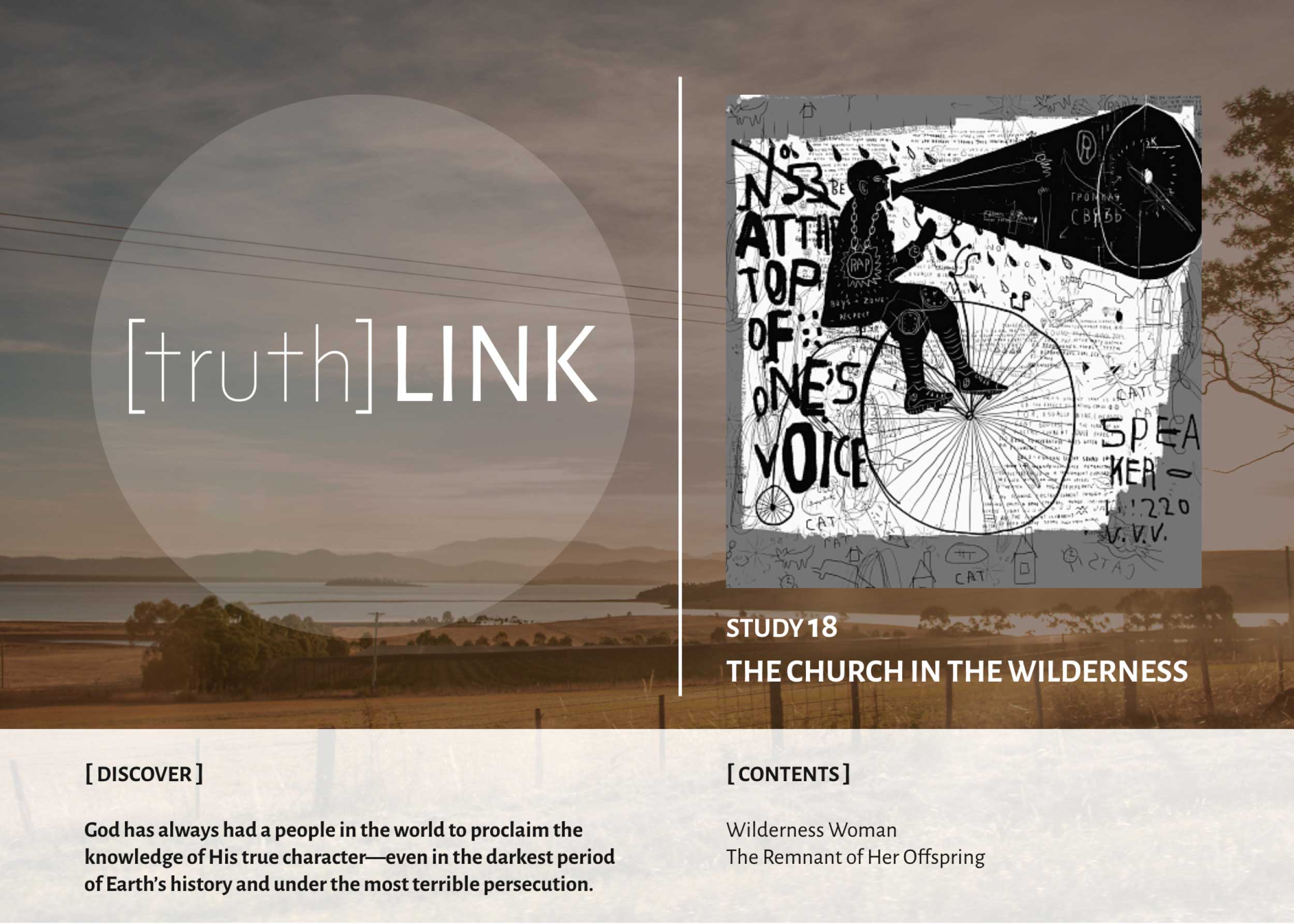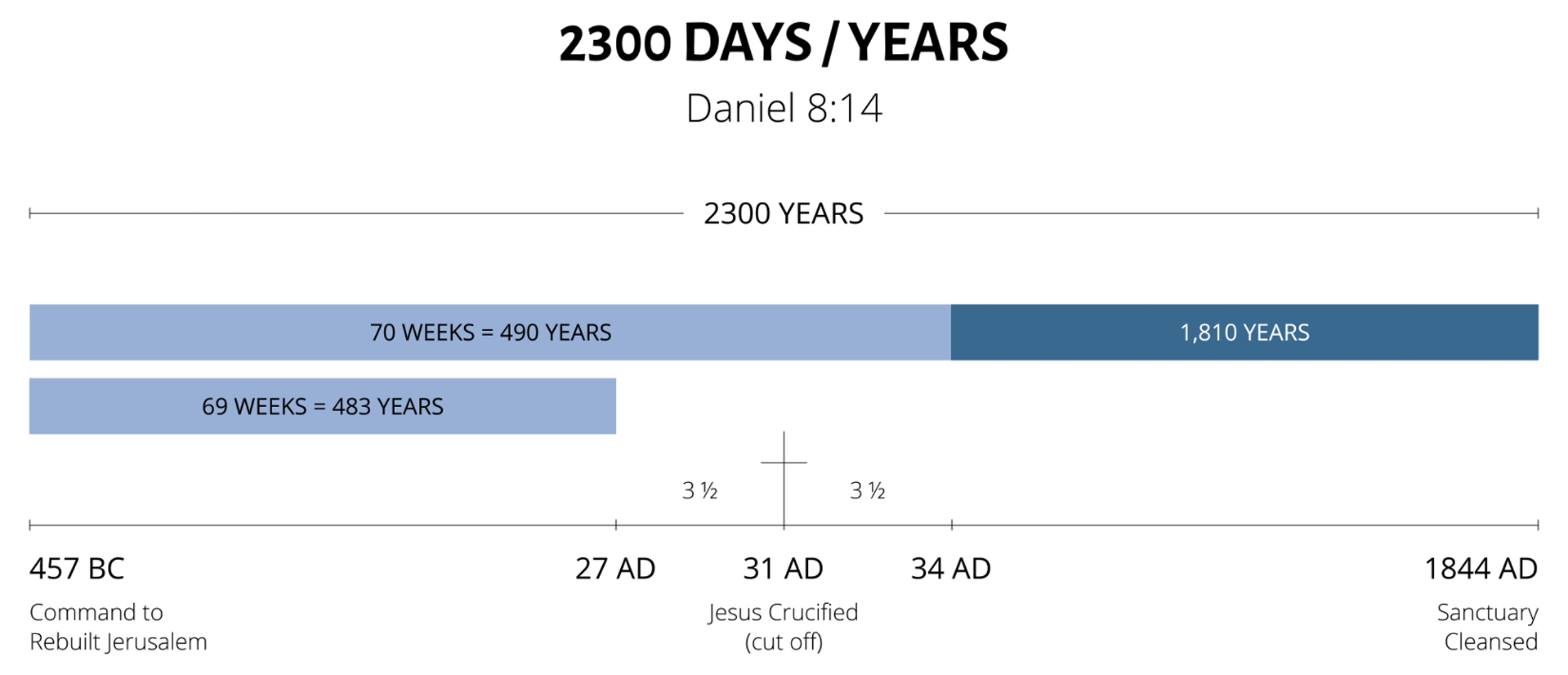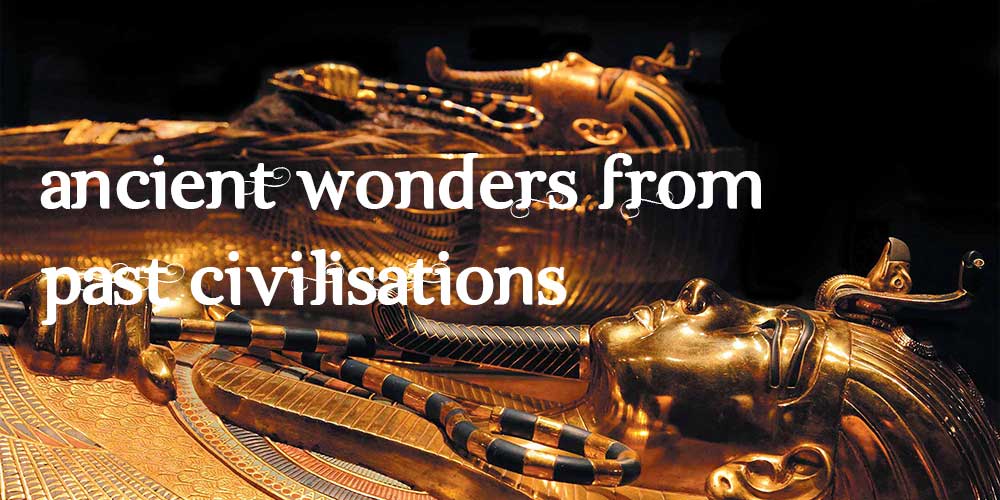
Wilderness Woman
Revelation 12 is nothing short of astounding. It presents a symbolic prophetic picture that traces the journey of God’s church from the birth of Christ straight down to the end of the world as we know it. Read the entire chapter, pausing to look up and discuss the scriptures provided as we unpack the rich symbolism of this remarkable prophecy.
“Now a great sign appeared in heaven: a ____________ clothed with the _______, with the _________ under her feet, and on her head a garland of twelve ________” (Revelation 12:1).
In biblical symbolism a woman represents a church (Jeremiah 6:2; Isaiah 54:5-6; 2 Corinthians 11:2; Ephesians 5:22-23). The sun that clothes the woman represents the healing truth of God’s love embodied in Christ, who is called “the Sun of Righteousness” and the “light of the world” (Malachi 4:2; John 8:12). The moon under her feet is an apt symbol of the lesser, reflective light of the Old Testament prophecies and symbols that pointed forward to Christ (Hebrews 1:1-3; 10:1, 5-10).
As John’s vision continued unfolding, he noticed that the woman was “with Child” and in labor pain about to give “birth” (Revelation 12:2). Immediately, John’s attention was then shifted to “a great fiery red dragon,” which he identifies as “that serpent of old, called the devil and Satan” (verses 3, 9). “And the dragon stood before the woman who was ready to give birth, to devour her Child as soon as it was born” (verse 4). Christ is here depicted as the Child of God’s covenant promise, born to the world through Israel just as Scripture foretold He would be (Genesis 3:15; 12:1-3; Isaiah 42:6). Satan is portrayed as a dragon attempting to destroy the Babe, the evil King Herod being the devil’s human agent for the grim task (Matthew 2:16). The homicidal attempt failed and Jesus grew up and achieved His mission to testify of the Father’s love (John 1:14, 18; 5:19; 14:9; 16:25-28; 17:3-4), was crucified, rose from the dead, and was “caught up to God and His throne” (Revelation 12:5). As a result, the New Testament church was born to the world as a continuation of Israel, now composed of all who would believe the truth about the Father revealed in Christ (Romans 9:6-9; Galatians 3:29).
At this point, John’s vision does a quick fast-forward to reveal “the woman,” the church, at a critical phase of her history:
“Then the woman fled into the ___________, where she has a place prepared by God, that they should feed her there one thousand two hundred and sixty days” (Revelation 12:6).
This is the church during the Dark Ages, when the papal Roman Church was on its rampage of persecution and drove the faithful followers of Christ into hiding. A day equals a year in Bible prophecy (Ezekiel 4:6), so the 1260 days are 1260 years. Remarkably, just as foretold, history marks off the period of papal supremacy as lasting for 1260 years: from A.D. 538, when the pope was made the official and undisputed ruler of Christendom by the decree of the Roman Emperor, Justinian, to the year 1798, when General Louis Alexandre Berthier, under command of Napoleon, dethroned and imprisoned the pope.

Then, in verses 7-12, before going on to further describe the church during her wilderness period, John loops back to the original “war” between good and evil that “broke out in heaven” between “Michael and His angels” on the one side and “the dragon and his angels” on the other. The most crucial point to notice is that John ingeniously merges that initial battle in heaven with the battle between Christ and Satan at the cross, which calls our attention to the fact that the life and death of Jesus defeated the devil. To discover this connection, read and discuss the following biblical passages:
Revelation 12:7-12, John 12:31-32, and Colossians 2:15.
John’s vision then returns in verses 13-16 to the church in its wilderness period. Having been defeated by Christ at Calvary, Satan “persecuted the woman.” Again, history unmistakably reveals that the human agency through which Satan made war on the followers of Christ was none other than the Roman Church, which had become the political heir to the crumbling pagan Roman Empire. But goes on to inform us that the followers of Jesus were to be “nourished for a time and times and half a time, from the presence of the serpent.” Back in verse 6 John said that God had taken the woman into the wilderness so that He might “feed her there.” The nourishing and feeding of the woman in the wilderness indicates that God would keep His true church alive with the pure gospel during the long Dark Ages of papal persecution. In fulfillment of this prophecy, the history books tell us of multiple wilderness communities that preserved the pure apostolic faith: the Waldenses, the Huguenots, the Albigenses, and many other groups of believers who, generation after generation, preserved the Bible and educated their children with the nourishing truths of the gospel.
This prophecy is extremely enlightening because it informs us, to our great relief, that the massive professed Christian system of Roman Catholicism that so long ruled large segments of the world with coercion and cruelty, was not, in fact, genuine Christianity. Rather, it was a counterfeit system operating by principles that made it the enemy of Christ and His true followers. Once we realize that true, apostolic Christianity went underground during the Dark Ages—into “the wilderness”—it becomes evident that all those bloody persecutions, inquisitions, and crusades that were perpetrated upon humanity in the name of Christ by the Roman Church only served to misrepresent Christ rather than make Him known as He truly is.
The Remnant of Her Offspring
In the last verse of Revelation 12 John directs our attention to the end-time continuation of the apostolic faith. For this verse, use the old King James Version to catch the significance of the idea:
“And the dragon was _________ with the woman, and went to make war with the _____________ of her seed, which keep the commandments of God, and have the testimony of Jesus Christ.” (Revelation 12:17, KJV).
The word “remnant” simply means a remaining quantity or piece of something. The idea of a remnant is drawn from the Old Testament, in which it referred to a representative group of Israel who would be preserved during a period of war and captivity and then reemerge faithful to God (Isaiah 10:20-22; 11:11, 16; 37:31-32; Jeremiah 23:3). Similarly, “the remnant” of Revelation 12:17 is composed of those who emerged after the 1260-year period of papal persecution to continue on with the preserved apostolic gospel. John tells us that the “remnant” will be clearly identifiable because they will be a body of believers who “keep the commandments of God and have the testimony of Jesus Christ.”
Again, history bears out the fulfillment of the prophecy. By the end of the 18th century, papal dominance was at an end due to the combined impact of the Protestant Reformation, the French Revolution, and the American Revolution. People were free at last to think for themselves and to publicly proclaim their faith. According to the prophecy, this is the period in which we are to look for a remnant people who “keep the commandments of God and have the testimony of Jesus Christ.” And that’s exactly what we do find.
By the first half of the 19th century the Protestant Reformation had fragmented into numerous denominations, each with their special points of recovered truth and each with retained doctrinal errors inherited from the papacy. At this time, a new movement arose on the scene of history that began to gather up the various truths recovered by the different branches of Protestantism and to synthesize all of them into a single theological system. The Advent Movement was composed of believers from various denominations. Baptists, Seventh-day Baptists, Methodists, to name a few, came together and studied the Scriptures. As a result, a chain of biblical truth was reassembled, link by link, with the potential to magnify the character of God before the world with restored apostolic clarity. “The remnant” of the woman’s offspring was reemerging from the wilderness. In our next study we will continue exploring the identity and mission of the remnant.
[CONNECT]
It is really quite amazing that Bible prophecy foretold hundreds of years in advance that the church of Christ would come under persecution from a counterfeit Christian system, flee into the wilderness for 1260 years to preserve the apostolic faith, and then reemerge at the end of time to again proclaim the pure gospel.
Paul reminds us that we are to speak “the truth in love” (Ephesians 4:15). The “remnant” concept of Scripture is a vital truth that can be spoken in such a manner as to make it untrue in spirit. The biblical idea has nothing to do with elitism, as if the remnant is composed of people who are better than everyone else. It is not intended by God to produce an arrogant us-versus-themism. The remnant of Revelation is a mission-driven movement that everyone and anyone may be a part of, because it is a call to communicate the truth of God’s good character to the world at large. As human beings, all of us have been impacted by the darkness that fills our world, and all of us need the light of God’s love as revealed in Christ. The remnant is made up of fallen, frail human beings who, just like everyone else, are sinners dependent on God’s grace. Those of us who come to know and believe the prophecy regarding the remnant are to hold that truth with humility and love, not with arrogance and argumentativeness.
[EXPERIENCE]
I want to be part of God’s remnant movement and help take the truth of the gospel to the world.
What a privilege and also a responsibility it is to understand the prophecy of Revelation 12! Learning these things makes me eager to learn more and fills me with motivation to share these things with others. May God continue opening my mind to the truths of His word and help me to speak the truth in love.
Phone 1300 300 389























